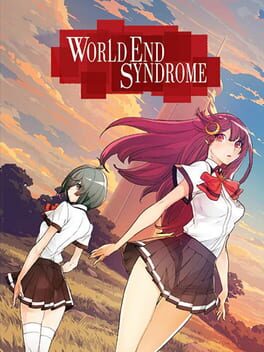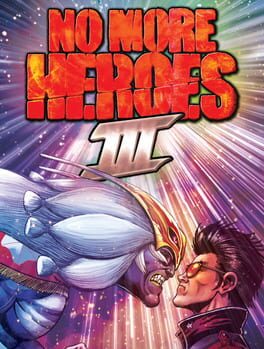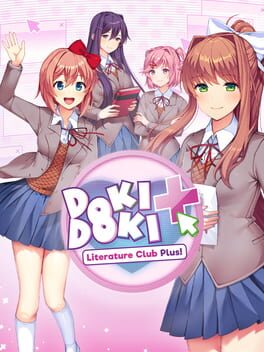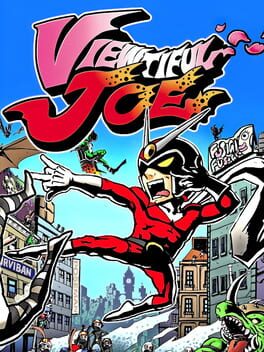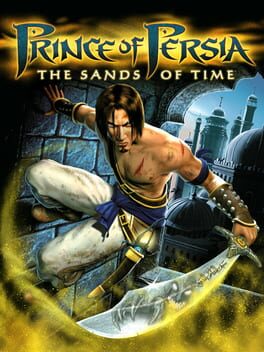Sadist
6 reviews liked by Sadist
World End Syndrome
2018
No More Heroes III
2021
The most complicated takashi miike filmography advertisement I've ever played.
Combat imo is an improvement over the rest of the series, it takes a lot more from it's other companions in the character action game genre. It's no DMC, and it still falls into the trapps of many other character action games where it's a lot of mash a button and then perfect dodge when you're going to get it, but I had fun all the way through. You have more moves than NMH1/2 despite only having one weapon and options and it held up by solid enemy design (something NMH1/2 really lacked) and fun bosses to cap them it out.
That being said, I dont like the changes to how you progress the game in this one. In NMH1/2 it was do minigames/short missions to get money for next ranked battle in the overworld > do level > boss fight, but NMH3 skips the level part for more mini missions an expanded overworld. Infact, almost all non boss enemies are found exclusively in these mini missions. Despite its increased size, the overworld is surprisingly bland and underused. Things like Perfect World, a very standard white suburban neighborhood, sounds like a great set piece for a character like Travis, but none of the zones are really used for anything other than traveling and doing mini missions.
Graphically the game is also surprisingly dated looking for a 2021. The overworld generally runs at a miserable framerate (the actual combat segments run super solid tho, which I can only assume involved selling some poor intern's soul), almost every cutscene you'll be seeing textures load in, and even when everything's running as they want it's not fantastic on a graphical fidelity level.
But you dont play NMH for graphical fidelity. You play it for style, and the game is oozing in it. My switch screencaps are filled with screenshots of the Kill! streams and the game has fantastic character designs, ect ect. It's a cool game.
Fights and a lot of story beats are fantastic and get really weird. Every time I thought I knew what was gonna happen the game through me for a loop. Also, I cant give an example because every single one borders on spoiler territory. If you plan on getting this game I highly, highly recommend trying to go completely blind, because you will like it more if you don't know how suda's gonna fuck with you.
NMH3, like the franchise, is flawed, but I think this is my favorite out of the 3. It's by far my favorite to play, and the way the game fucks with your expectations rules, the entire ending section of this game actually blew me away. Like the rest of the franchise, my mind makes me want to put it at the 3 star range, but I liked it more than a 3 star game.
Also, yes you have to play Travis Strikes Back. It's not negotiable. This game is a sequel to TSA, not a sequel to NMH2.
Combat imo is an improvement over the rest of the series, it takes a lot more from it's other companions in the character action game genre. It's no DMC, and it still falls into the trapps of many other character action games where it's a lot of mash a button and then perfect dodge when you're going to get it, but I had fun all the way through. You have more moves than NMH1/2 despite only having one weapon and options and it held up by solid enemy design (something NMH1/2 really lacked) and fun bosses to cap them it out.
That being said, I dont like the changes to how you progress the game in this one. In NMH1/2 it was do minigames/short missions to get money for next ranked battle in the overworld > do level > boss fight, but NMH3 skips the level part for more mini missions an expanded overworld. Infact, almost all non boss enemies are found exclusively in these mini missions. Despite its increased size, the overworld is surprisingly bland and underused. Things like Perfect World, a very standard white suburban neighborhood, sounds like a great set piece for a character like Travis, but none of the zones are really used for anything other than traveling and doing mini missions.
Graphically the game is also surprisingly dated looking for a 2021. The overworld generally runs at a miserable framerate (the actual combat segments run super solid tho, which I can only assume involved selling some poor intern's soul), almost every cutscene you'll be seeing textures load in, and even when everything's running as they want it's not fantastic on a graphical fidelity level.
But you dont play NMH for graphical fidelity. You play it for style, and the game is oozing in it. My switch screencaps are filled with screenshots of the Kill! streams and the game has fantastic character designs, ect ect. It's a cool game.
Fights and a lot of story beats are fantastic and get really weird. Every time I thought I knew what was gonna happen the game through me for a loop. Also, I cant give an example because every single one borders on spoiler territory. If you plan on getting this game I highly, highly recommend trying to go completely blind, because you will like it more if you don't know how suda's gonna fuck with you.
NMH3, like the franchise, is flawed, but I think this is my favorite out of the 3. It's by far my favorite to play, and the way the game fucks with your expectations rules, the entire ending section of this game actually blew me away. Like the rest of the franchise, my mind makes me want to put it at the 3 star range, but I liked it more than a 3 star game.
Also, yes you have to play Travis Strikes Back. It's not negotiable. This game is a sequel to TSA, not a sequel to NMH2.
My opinion of DDLC has waned over the years, as I've played through it enough to see it as only just barely hitting the mark of a well-executed psychological horror game. But I think, with the extra side stories included within this "expansion", I am able to appreciate it a lot more.
The greatest part of this game was always the characters. They were well designed and have some great interactions together.
My biggest gripe with the main game was that it ends up focusing on the "breaking the fourth wall" haunted game surprise concept a lot more than the actual characters. This is certainly what Dan Salvato was going for (he says as much in the end note), but I couldn't help but feel that Doki's strongest aspect was not the horror, but the dark reality of the character's hidden mental states and secrets. This is EXACTLY what the side stories focus on and I couldn't be happier. They focus on relationships between the four characters. No computer glitches or creepy text, just raw visual novel story with emotions flying high.
I feel that everything about this part just works. The writing is beautifully done, the visuals continue to compliment the story and the new soundtrack was a delight to hear. I was extremely touched by these chapters.
Unfortunately for me, it's very likely that any future DDLC games will be related to the other aspect of this world, being that DDLC is a simulation created by some unknown organization. I can only assume the focus will be on this fictional world housing DDLC's fictional world, which is a bit disappointing for me. Still, I did like the improvements made to the menu, with the new desktop making it much easier to open and close the game, as well as being an efficient way to keep track of which scenes you have and haven't seen.
Whether or not you'll enjoy DDLC+ really depends on how much you like psychological horror, but are also willing to sit in for some really good and emotional VN fun (or the other way around).
The greatest part of this game was always the characters. They were well designed and have some great interactions together.
My biggest gripe with the main game was that it ends up focusing on the "breaking the fourth wall" haunted game surprise concept a lot more than the actual characters. This is certainly what Dan Salvato was going for (he says as much in the end note), but I couldn't help but feel that Doki's strongest aspect was not the horror, but the dark reality of the character's hidden mental states and secrets. This is EXACTLY what the side stories focus on and I couldn't be happier. They focus on relationships between the four characters. No computer glitches or creepy text, just raw visual novel story with emotions flying high.
I feel that everything about this part just works. The writing is beautifully done, the visuals continue to compliment the story and the new soundtrack was a delight to hear. I was extremely touched by these chapters.
Unfortunately for me, it's very likely that any future DDLC games will be related to the other aspect of this world, being that DDLC is a simulation created by some unknown organization. I can only assume the focus will be on this fictional world housing DDLC's fictional world, which is a bit disappointing for me. Still, I did like the improvements made to the menu, with the new desktop making it much easier to open and close the game, as well as being an efficient way to keep track of which scenes you have and haven't seen.
Whether or not you'll enjoy DDLC+ really depends on how much you like psychological horror, but are also willing to sit in for some really good and emotional VN fun (or the other way around).
To say Telltale got around when it came to licenses is an understatement. One of the biggest reasons it fail was because it was always taking on too many projects, and for a long time, I thought it was because Telltale didn’t actually care about making a good choice system or care about the material at hand. On revisit, I have found time and time again, the opposite is indeed true. Telltale crafts a lot of these stories well, and try to help set up their own versions of characters, plots, and world building. While The Enemy Within is a great example of Telltale creating something new from old, it sadly still has a lot of technical problems and decision issues that plague it’s otherwise great tale.
Enemy Within being effectively the second season of the Telltale Batman universe, we are given a small glimpse of what happened and what choices we made during the first game. Aside from a few off handed mentions in the first episode, the choices you made in the first game just feel irrelevant after the fact, and the choices that did matter, matter very little. This isn’t much of a testament of the choice system in this game, as it kinda has a similar, but different problem. The majority of choices in Enemy Within just don’t really feel they impact much or really feel like conflicting choices. Most of the choices seen either contribute to an overall relationship dynamic or just feel so weighted one way that it’s a clear choice for most people to go with the other option, often leaving 70/30 polls at the end of these episodes. On the technical side of things, Enemy Within does look better than it’s previous season, but sometimes models can feel a bit off pending on movement timing. Fighting has been far more refined to feel like a fighting sequence, but there is still a lot of one missed key deaths that have seemed to cause Telltale to increase the leeway on key accusation instead of Heavy Rain’s far more interesting flown combat script system. It does feel like Enemy With takes 1 step forward tho and 2 steps back; as they have a number of fights that do feel pretty stunning to actually playthrough compared to the stilt action of most telltale games. Detective work is pretty much thrown away after the first episode too, as the second season is far more interested in a certain dynamic more than anything else.
Relationship dynamics are always the most interesting part of telltale game’s as the iconic, “____ will remember that” is often a trope found in a lot of them. So, of course, the iconic duo, Joker and Batman would have a larger focus on their relationship dynamic compared to everyone else in this series. While Joker, aka John Doe, played a minimal role in the last season, he is brought in heavily for the second season. Perhaps what is the most compiling thing about John Doe and Batman is more so how there relationship dynamic can change so drastically pending on your actions as both Bruce or Batman, making the origins of Joker itself far more multiple choice, and either far more connected to Batman than before or someone that was simply a lost cause. While the relationship with Joker and Batman has always been a prominent dynamic in the series, it was never something that was established with Bruce/Batman having all the power. John Doe is honestly just a really mentality unstable patient that is looking for support, and in this way telltale actually makes us empathize with him. Not to say that their isn’t other relationships or characters in this story that aren’t interesting, as I do enjoy these versions of the Riddler and Harley compared to how we usually get them. Still every relationship takes a backseat to John Doe and Bruce/Batman, and really that’s what makes this season far more interesting than the last.
While I don’t think we will find this version of Telltale’s Batman any time soon, I honestly enjoy my time with both games, and consider the overall experience a positive one. Any problems I had with this season were often minimal in comparison to the majority of Telltale’s other works, and while I do think it was both enhanced and suffered from the focus of one relationship, I don’t think I would trade that unique approach with the usual same old same old. It’s both a testament to Telltale’s writing skills and the staying power of these DC characters.
Enemy Within being effectively the second season of the Telltale Batman universe, we are given a small glimpse of what happened and what choices we made during the first game. Aside from a few off handed mentions in the first episode, the choices you made in the first game just feel irrelevant after the fact, and the choices that did matter, matter very little. This isn’t much of a testament of the choice system in this game, as it kinda has a similar, but different problem. The majority of choices in Enemy Within just don’t really feel they impact much or really feel like conflicting choices. Most of the choices seen either contribute to an overall relationship dynamic or just feel so weighted one way that it’s a clear choice for most people to go with the other option, often leaving 70/30 polls at the end of these episodes. On the technical side of things, Enemy Within does look better than it’s previous season, but sometimes models can feel a bit off pending on movement timing. Fighting has been far more refined to feel like a fighting sequence, but there is still a lot of one missed key deaths that have seemed to cause Telltale to increase the leeway on key accusation instead of Heavy Rain’s far more interesting flown combat script system. It does feel like Enemy With takes 1 step forward tho and 2 steps back; as they have a number of fights that do feel pretty stunning to actually playthrough compared to the stilt action of most telltale games. Detective work is pretty much thrown away after the first episode too, as the second season is far more interested in a certain dynamic more than anything else.
Relationship dynamics are always the most interesting part of telltale game’s as the iconic, “____ will remember that” is often a trope found in a lot of them. So, of course, the iconic duo, Joker and Batman would have a larger focus on their relationship dynamic compared to everyone else in this series. While Joker, aka John Doe, played a minimal role in the last season, he is brought in heavily for the second season. Perhaps what is the most compiling thing about John Doe and Batman is more so how there relationship dynamic can change so drastically pending on your actions as both Bruce or Batman, making the origins of Joker itself far more multiple choice, and either far more connected to Batman than before or someone that was simply a lost cause. While the relationship with Joker and Batman has always been a prominent dynamic in the series, it was never something that was established with Bruce/Batman having all the power. John Doe is honestly just a really mentality unstable patient that is looking for support, and in this way telltale actually makes us empathize with him. Not to say that their isn’t other relationships or characters in this story that aren’t interesting, as I do enjoy these versions of the Riddler and Harley compared to how we usually get them. Still every relationship takes a backseat to John Doe and Bruce/Batman, and really that’s what makes this season far more interesting than the last.
While I don’t think we will find this version of Telltale’s Batman any time soon, I honestly enjoy my time with both games, and consider the overall experience a positive one. Any problems I had with this season were often minimal in comparison to the majority of Telltale’s other works, and while I do think it was both enhanced and suffered from the focus of one relationship, I don’t think I would trade that unique approach with the usual same old same old. It’s both a testament to Telltale’s writing skills and the staying power of these DC characters.
Viewtiful Joe
2003
A massive love letter to toku media, from the "monster of the week" framing of the bosses to the way the fighting is extremely choreographed and more akin to dance than a full on fight. Also works as a light criticism of the stereotypical moviegoer: Joe exists as an embodiment of the negative aspects of film bro culture, living entirely through shitty b-movies, to the detriment of his real life relationships. Fun game! Mechanically a lot of elements come together to emphasize the love of cinema, including the necessity of FX, key in particular to toku series. Short and sweet, but with enough content to make repeat playthoughs worthwhile
The blueprint for what 3D platforming would eventually become, aka the ‘Uncharted’ action adventure game. Back in 2003 this was a really big deal, at least for those who played it and for the industry at large. It was a very different kind of 3D traversal. Unlike Mario 64 or Tomb Raider, the skillset of the Prince was a lot more contextual. This is demonstrated super early on with a huge set piece of the Prince infiltrating a palace under siege. We now know this as the boring bombastic intro before the real game starts, but again, at the time this was genuinely revolutionary. Bridges crumble under you at the most opportune time as you leap across to the other side, the camera switching to a dramatic dutch angle. Truly filmic, no but really, this was the most successful attempt at ‘playing a movie’ since Metal Gear Solid. If you tried that same leap without a gap to jump over the Prince would simply roll on the floor. As a 10 year old I was dumbstruck by this, but now I can understand this was a game about authoring moments, the hand of the developer was being felt outside of cutscenes for the first time. Obviously the DNA of this idea is deeply ingrained in so many games today. Every protruding ledge, marked wall, collapsing bridge that you find in every third person action game came from Sands of Time.
It’s common knowledge that despite great reviews it underperformed in sales (which resulted in the Warrior Within tonal 180), but developers definitely took notice and it wasn’t long before everyone copied it, for example the Tomb Raider Legend reboot from Crystal Dynamics was a straight rip. But really it was Uncharted (2) that truly popularised this style, evolving the traversal into being almost completely automated and entirely in service of the spectacle.
But that’s not to say that this is one of formative-but-unplayable kind of games. Despite some scripted aspects the platforming is a lot more skill-based and fun than anything in Uncharted. The developers had a big legacy to live up to after all, so you get a lot timed puzzles and deadly traps and the like. The storytelling is also extremely elegant with just two main characters, Prince and his love interest/companion Farah. This again is very Naughty Dog, with exposition and character moments being delivered organically during gameplay rather than constant cutscenes. The Prince also acts as a narrator too, telling his story from some point in the future. All of this made for a very dynamic, fresh and gripping experience. There’s a restraint and sophistication to everything. As a kid I was enthralled, as an adult it still holds up, both as a game and as an inspiring example of a team firing on all cylinders. The only real negative is the combat, which is too frequent and too repetitive. That said it’s worth persevering. A true classic in my opinion! ⭐️
It’s common knowledge that despite great reviews it underperformed in sales (which resulted in the Warrior Within tonal 180), but developers definitely took notice and it wasn’t long before everyone copied it, for example the Tomb Raider Legend reboot from Crystal Dynamics was a straight rip. But really it was Uncharted (2) that truly popularised this style, evolving the traversal into being almost completely automated and entirely in service of the spectacle.
But that’s not to say that this is one of formative-but-unplayable kind of games. Despite some scripted aspects the platforming is a lot more skill-based and fun than anything in Uncharted. The developers had a big legacy to live up to after all, so you get a lot timed puzzles and deadly traps and the like. The storytelling is also extremely elegant with just two main characters, Prince and his love interest/companion Farah. This again is very Naughty Dog, with exposition and character moments being delivered organically during gameplay rather than constant cutscenes. The Prince also acts as a narrator too, telling his story from some point in the future. All of this made for a very dynamic, fresh and gripping experience. There’s a restraint and sophistication to everything. As a kid I was enthralled, as an adult it still holds up, both as a game and as an inspiring example of a team firing on all cylinders. The only real negative is the combat, which is too frequent and too repetitive. That said it’s worth persevering. A true classic in my opinion! ⭐️
